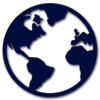
Only Regulatory Products (API/FDF), Drugs in Developments and News are Updated on this Virtual Booth
Update your Virtual Booth on PharmaCompass, ask us ![]()
About
Not Confirmed
Not Confirmed
24-26 February, 2026
Not Confirmed
Not Confirmed
17-21 January, 2026
Not Confirmed
Not Confirmed
21-22 January, 2026
List your booth number for exhibitions, ask us
CONTACT DETAILS




Upload your Marketing & Sales content on your company Virtual Booth, click HERE.
Events
Webinars & Exhibitions
Industry Trade Show
Not Confirmed
24-26 February, 2026
Industry Trade Show
Not Confirmed
17-21 January, 2026
Industry Trade Show
Not Confirmed
21-22 January, 2026
Digital content


14 Jan 2026
// BIOSPACE
https://www.biospace.com/business/jpm26-gilead-captures-sunny-jpm-mood-with-yeztugo-numbers-hiv-vibes

14 Jan 2026
// FIERCE BIOTECH
https://www.fiercebiotech.com/biotech/jpm-lenacapavir-momentum-builds-gilead-eyes-new-deals-position-strength

08 Jan 2026
// GLOBENEWSWIRE
https://www.globenewswire.com/news-release/2026/01/08/3215374/0/en/Xilio-Therapeutics-Highlights-Upcoming-Milestones-and-Recent-Corporate-Updates.html

07 Jan 2026
// PR NEWSWIRE
https://www.prnewswire.com/news-releases/raap-alternative-funding-programs-put-rare-patients-in-jeopardy-302655266.html

07 Jan 2026
// FIERCE BIOTECH
https://www.fiercebiotech.com/research/gilead-study-finds-hiv-can-evolve-resist-lenacapavir-doing-so-hampers-virus-replication

02 Jan 2026
// FIERCE BIOTECH
https://www.fiercebiotech.com/biotech/abbvie-gilead-gift-themselves-clinical-stage-cancer-drugs
Excipients
REF. STANDARDS & IMPURITIES

ABOUT THIS PAGE
Gilead Sciences is a supplier offers 22 products (APIs, Excipients or Intermediates).
Find a price of Amphotericin B bulk with DMF offered by Gilead Sciences
Find a price of Cobicistat bulk with DMF offered by Gilead Sciences
Find a price of Elvitegravir bulk with DMF offered by Gilead Sciences
Find a price of Emtricitabine bulk with JDMF offered by Gilead Sciences
Find a price of Tenofovir bulk with JDMF offered by Gilead Sciences
Find a price of 2-Phosphonomethyl-Pentanedioic Acid bulk offered by Gilead Sciences
Find a price of Aconiazide bulk offered by Gilead Sciences
Find a price of Didanosine bulk offered by Gilead Sciences
Find a price of Dobutamine Hydrochloride bulk offered by Gilead Sciences
Find a price of Lurtotecan bulk offered by Gilead Sciences
Find a price of Triacetyluridine bulk offered by Gilead Sciences
Find a price of Zalcitabine bulk offered by Gilead Sciences
Find a price of LIPOSOMAL OSI-7904 FOR INJECTION (OSI-7904L) bulk offered by Gilead Sciences
Find a price of FACILITY AND PROCEDURES FOR GAMMA RAY STERILIZATION bulk offered by Gilead Sciences
Find a price of FK506LC AND PLACEBO bulk offered by Gilead Sciences
Find a price of G. METHODS AND PROPERTIES OF 2'-3'-DIDEOXYADENOSINE bulk offered by Gilead Sciences
Find a price of MANUFACTURING SITE, FACILITIES, PERSONNEL, AND GENERAL OPERATING PROCEDURES IN EDMONTON, ALBERTA, CANADA. bulk offered by Gilead Sciences
Find a price of Aztreonam bulk offered by Gilead Sciences
Find a price of Bictegravir Sodium bulk offered by Gilead Sciences
Find a price of Filgotinib bulk offered by Gilead Sciences
Find a price of Remdesivir bulk offered by Gilead Sciences
Find a price of Tenofovir Alafenamide Fumarate bulk offered by Gilead Sciences

